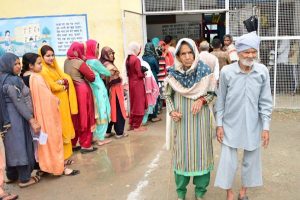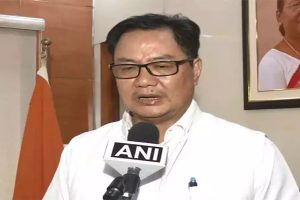Despite its many shortcomings, the much reviled education system, introduced by the British, had been successful in promoting upward mobility on a truly large scale. Many icons of modern India, pre-eminently President Abdul Kalam, came from disadvantaged backgrounds, had their education in Government schools, and went on to excel in their chosen fields.
The system ran smoothly; in small cities, all children right from the Collector’s son to his peon’s son, went to the same Government school where practically no fees were charged. The same story was repeated in universities, medical and engineering colleges. Once you got admission, the least of your worries was paying for your education.
Slowly, the system disintegrated. The first casualty was primary education. Almost unanimously in the 1960s, all State Governments decided that English should not be taught in primary schools. Paradoxically, at that time, little effort was made to hold prestigious recruitment examinations such as for the IAS or NDA in local languages. The result was that educated parents withdrew their children out of Government schools.
Secondary education was the next victim. Initially, every State had a Secondary Education Board and there was healthy competition between the various State Boards. However, lack of foresight coupled with inadequate infrastructure ensured that most Boards and their affiliated schools were not able to handle the burgeoning student population.
The education mafia started ruling the roost and examination malpractices became rampant. Well-off parents started shunning State Boards, the really well-heeled opted for IB (International Baccalaureate) and those of more modest means contented themselves with ICSE or CBSE. The net result was a decline in the number of ‘good’ students studying in State Boards.
The decline in standards of higher education also dates back to the 1960s when inspired by leftist movements, universities started becoming the hotbed of political activity. With no jobs in sight, students eschewed scholastic pursuits, favouring disruptive activities instead. Ancient universities like Calcutta University and Allahabad University failed to complete their academic schedules.
The continuous degeneration in academic standards was aggravated by an exponential increase in the number of educational institutions and student population; when the UGC was set up in 1956, there were 20 universities, 500 colleges and around 2 lakh students. The figures have increased to over 900 universities, 40,000 colleges and more than 3.5 crore students.
The all-round failure of the education system led to the burgeoning of private educational institutions. At the primary level, we started seeing schools with quaint names like St. Rahim (I personally know of a school which called itself St. Venus) which charged exorbitant fees, mimicked the dress code of far better schools, but offered little of academic value.
This trend was amplified at the secondary and college levels particularly by institutions offering technical education. Innovative terms like “Capitation Fees” were coined for the lakhs of rupees collected from students for admission. Unfortunately, the State Governments and the Centre watched passively as a well-established educational system was gradually demolished.
One can have no quarrel with private education if it supplemented or even supplanted the existing education system. However, this did not happen. Private institutions, despite being around for some time, have seldom achiev-ed the excellence expected of them. Leading institutes in all fields are the same ~ IITs, IIMs, AIIMS and National Law Colleges. It is a different matter that no Indian university or college figures within the first 250 in international rankings.
A number of distressing trends have been witnessed in higher education in the last few years. Taking a cue from private institutions, the IITs and IIMs have hiked their fees manifold ~ leaving the really poor students high and dry.
Dearth of students, caused by high fees and poor job opportunities, has forced hundreds of private professional colleges to shut shop with the still alive institutions reporting vacancies of more than 50 per cent.
Non-professional courses have even fewer takers; top colleges are not able to fill their seats. It would seem that higher education has become irrelevant for today’s youth, a really disturbing portent, which has not been properly analysed.
With the rise in the cost of domestic education, the cream of the student community goes abroad for their education, indeed to countries where they are at least assured of a job once they pass out. In fact, President Trump’s protectionist policy may be a blessing in disguise for India because it will certainly stem the flight of talent from our shores. But the way things are moving, our dream of turning India into a ‘knowledge power’ seems to have gone for a six.
The Government has been lamenting the state of higher education in India for quite some time. As far back as 2009, the Government proposed to replace the University Grants Commission (UGC) and All India Council for Technical Education (AICTE) with a National Commission for Higher Education & Research (NCHER). This proposal was rejuvenated in 2017 with the apex body being renamed Higher Education Empowerment Regulation Agency (HEERA).
A similar proposal has been revived recently, this time with the apex body being renamed as the Higher Education Commission of India (HECI), which would replace UGC but not AICTE. The major difference between UGC and HECI would be that the grant-giving function of UGC would now be discharged by the HRD ministry ~ something like the Niti Aayog replacing the Planning Commission.
Higher education cannot be reformed merely by renaming regulators or by making cosmetic changes. The educational standard of the students coming out of secondary schools has to be improved first because better raw material has to be provided to colleges if we want them to excel.
According to Pratham’s Annual Survey of Education Report (ASER) for 2017 and 2018, one in every 10 of all students and 4 in 10 of rural students aged 14-18 years could not read a standard I and standard II text in their own language and only 43 per cent adolescents were able to divide a three-digit number by a one-digit number, only 23 per cent were able to subtract and only 34 per cent recognised numbers below 99.
Such students often make it to the portals of higher learning, courtesy the education mafia or donations. Even the toppers are not much better, out of the lakhs who scored more than 90 per cent in their Class 12 examination less than 20,000 were able to qualify for admission to the IITs. With such poor input, it is not surprising that higher education is in the doldrums.
Every education minister has some pet notions which he or she puts in action once he or she assumes office. For example, till recently we had the no-detention policy and the internal examination for Class 10, which were abandoned once the Government changed.
The bottom line is that the Government (both Central and State combined) spends only 2.4 per cent of its Gross Domestic Product on education compared to the world average of 4.8 per cent. Additionally, the HRD Ministry budget has progressively fallen from Rs1,10,351 in 2014-15 to Rs 79,685 in 2017-18. With such miserly expenditure on education it would indeed have been surprising if our institutions of higher learning were doing any better.
An omnibus long-term policy for all levels of education backed by adequate resources needs to be formulated because from the primary to the university level education, is a continuous process.
Measures like introducing vocational education and linking education to jobs have to be put in in the list of Government’s top priorities. By proper planning the mismatch between the number of pass-outs and the number of jobs in a particular speciality has to be bridged. Proper infrastructure has to be created for schools and colleges and teachers’ vacancies, numbering more than 1 million, have to be filled.
Education, even higher education, has to be made affordable for all because education is the medium that has raised millions of Indians out of poverty and has the potential of improving the lot of countless more.
The American activist Malcolm X had aptly summarised the value of education: “Education is our passport to the future, for tomorrow belongs to the people who prepare for it today” but we have to remember that we cannot educate one and a quarter billion people by merely launching fancifully named schemes; we will have to give the sweat of our brow and the silver in our purse if we are to succeed in our endeavours.
The writer is a retired Principal Chief Commissioner of Income-Tax.











